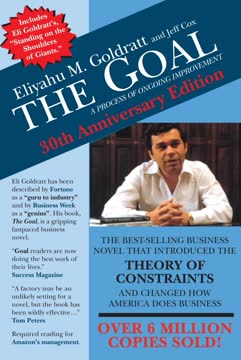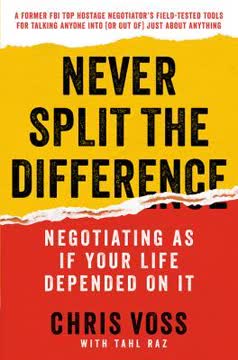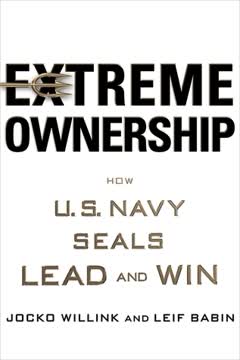Key Takeaways
1. Trust is the foundation of effective teamwork
Trust is the confidence among team members that their peers' intentions are good, and that there is no reason to be protective or careful around the group.
Vulnerability builds trust. In high-performing teams, members are comfortable being open about their weaknesses, mistakes, and concerns. This vulnerability-based trust creates an environment where individuals can focus on the task at hand rather than wasting energy on self-protection or political maneuvering.
Trust enables productivity. When team members trust each other:
- They ask for help without hesitation
- They offer constructive feedback freely
- They appreciate and leverage each other's skills and experiences
- They give colleagues the benefit of the doubt
- They focus on important issues rather than engaging in office politics
To build trust, teams can engage in exercises such as sharing personal histories, discussing individual strengths and weaknesses, and utilizing personality assessments. These activities help team members understand and empathize with one another, breaking down barriers and fostering a more trusting environment.
2. Healthy conflict is essential for team growth and innovation
It is important to distinguish productive ideological conflict from destructive fighting and interpersonal politics.
Embrace productive conflict. Teams that engage in healthy debate around ideas and concepts tend to make better decisions and solve problems more efficiently. This type of conflict is focused on issues, not personalities, and allows for the exploration of diverse perspectives.
Benefits of healthy conflict:
- Lively, engaging meetings
- Quick resolution of critical issues
- Exploitation of all team members' ideas and perspectives
- Minimized politics and personal attacks
- Improved innovation and creativity
To encourage productive conflict, team leaders should:
- Acknowledge that conflict is necessary and beneficial
- Model appropriate conflict behavior
- Allow natural resolution of disagreements without premature intervention
- Use conflict mining techniques to uncover and address buried disagreements
- Provide real-time permission for team members to engage in healthy debate
3. Commitment stems from clarity and buy-in, not consensus
Great teams make clear and timely decisions and move forward with complete buy-in from every member of the team, even those who voted against the decision.
Clarity and buy-in drive commitment. Teams that achieve high levels of commitment make decisions quickly and confidently, even without perfect information or complete consensus. This approach allows for faster execution and the ability to change course if needed.
Key aspects of fostering commitment:
- Ensure all team members' opinions are heard and considered
- Avoid seeking consensus, which can lead to watered-down decisions
- Make decisions boldly, even with imperfect information
- Create a culture where team members support decisions, even if they initially disagreed
- Recognize that reasonable people don't need to get their way to buy in
Leaders can promote commitment by:
- Encouraging open debate before decisions are made
- Setting clear deadlines for when decisions will be made
- Aligning the team around common objectives
- Reviewing key decisions at the end of meetings to ensure clarity
- Following up with team members to reinforce their commitment
4. Accountability drives performance and strengthens relationships
By engaging in productive conflict and tapping into team members' perspectives and opinions, a team can confidently commit and buy in to a decision knowing that they have benefited from everyone's ideas.
Peer-to-peer accountability is crucial. In high-performing teams, members hold each other accountable for their commitments and behaviors. This mutual accountability creates a culture of high standards and reinforces the team's commitment to achieving its goals.
Characteristics of teams with strong accountability:
- Team members address peers' unproductive behaviors quickly
- There's respect for peers who call out performance issues
- Members feel pressure from peers, not just leaders, to improve
- Team members offer assistance to peers who are struggling
- The team doesn't rely solely on the leader for discipline
To foster accountability:
- Publish team goals and standards
- Conduct regular progress reviews
- Encourage team members to give each other feedback
- Address missed commitments immediately
- Reward those who hold their peers accountable
5. Focus on collective results over individual success
Inattention to results occurs when team members put their individual needs (such as ego, career development, or recognition) or even the needs of their divisions above the collective goals of the team.
Prioritize team success. High-performing teams focus on collective outcomes rather than individual achievements or departmental wins. This shared commitment to results drives collaboration and prevents the destructive behaviors that arise from personal agendas.
Characteristics of results-oriented teams:
- Team members willingly make sacrifices for the team's success
- Individuals are quick to give credit to others
- The team is slow to seek recognition for itself
- Members are results-oriented and avoid distractions
- Morale and productivity increase as progress is made towards goals
To create a results-focused team:
- Publicly declare the team's desired outcomes
- Tie rewards and recognition to team achievement
- Be willing to confront members who prioritize their own interests
- Minimize individualistic behavior
- Create a culture of collective ownership and shared responsibility
6. Overcome the five dysfunctions to build a cohesive team
And so, like a chain with just one link broken, teamwork deteriorates if even a single dysfunction is allowed to flourish.
Address all five dysfunctions. The five dysfunctions of a team—absence of trust, fear of conflict, lack of commitment, avoidance of accountability, and inattention to results—are interconnected. Overcoming these dysfunctions requires a holistic approach that addresses each area systematically.
Steps to build a cohesive team:
- Establish trust through vulnerability and openness
- Encourage healthy conflict around ideas
- Foster commitment through clarity and buy-in
- Implement peer-to-peer accountability
- Focus on collective results
Tools and techniques for team improvement:
- Personal histories exercise
- Team effectiveness exercise
- Personality and behavioral assessments
- 360-degree feedback
- Conflict resolution training
- Goal-setting and progress tracking systems
7. Leadership plays a crucial role in fostering team effectiveness
The most important action that a leader must take to encourage the building of trust on a team is to demonstrate vulnerability first.
Lead by example. Team leaders have a significant impact on the team's dynamics and effectiveness. By modeling desired behaviors and creating an environment that supports teamwork, leaders can guide their teams towards high performance.
Key leadership responsibilities:
- Demonstrate vulnerability to build trust
- Encourage and facilitate productive conflict
- Make timely decisions to drive commitment
- Hold team members accountable
- Focus the team on collective results
Leadership strategies for team development:
- Conduct regular team-building exercises
- Provide clear direction and expectations
- Offer constructive feedback and recognition
- Address dysfunctional behaviors promptly
- Invest in developing team members' skills
- Create opportunities for team collaboration and bonding
Last updated:
FAQ
What's "The Five Dysfunctions of a Team" about?
- Leadership Fable: The book is a leadership fable that explores the challenges of building a cohesive team. It uses a fictional story to illustrate real-world team dynamics.
- Five Dysfunctions Model: It introduces a model that identifies five dysfunctions that prevent teams from working effectively: absence of trust, fear of conflict, lack of commitment, avoidance of accountability, and inattention to results.
- Practical Solutions: The book provides practical solutions and strategies to overcome these dysfunctions, aiming to help teams achieve better results.
- Broader Application: While focused on executive teams, the principles can be applied to any group working together, from small departments to large organizations.
Why should I read "The Five Dysfunctions of a Team"?
- Improve Team Dynamics: The book offers insights into common team challenges and provides actionable strategies to improve team dynamics and performance.
- Leadership Development: It is particularly useful for leaders who want to foster a more cohesive and effective team environment.
- Engaging Storytelling: The fable format makes complex concepts accessible and engaging, allowing readers to relate to the characters and scenarios.
- Universal Principles: The principles discussed are applicable across various industries and team settings, making it a valuable resource for anyone involved in teamwork.
What are the key takeaways of "The Five Dysfunctions of a Team"?
- Trust is Foundational: Building trust among team members is crucial for overcoming other dysfunctions and fostering open communication.
- Embrace Conflict: Healthy conflict is necessary for effective decision-making and should be encouraged rather than avoided.
- Commitment and Accountability: Teams must commit to decisions and hold each other accountable to achieve collective goals.
- Focus on Results: The ultimate measure of a team's success is its ability to achieve results, which requires prioritizing team goals over individual interests.
What are the five dysfunctions according to Patrick Lencioni?
- Absence of Trust: This dysfunction arises from team members' unwillingness to be vulnerable and open with one another.
- Fear of Conflict: Without trust, teams are unable to engage in healthy, productive conflict, leading to artificial harmony.
- Lack of Commitment: A lack of conflict prevents team members from fully committing to decisions, resulting in ambiguity.
- Avoidance of Accountability: Without commitment, team members are less likely to hold each other accountable for their actions.
- Inattention to Results: When accountability is lacking, team members may prioritize personal goals over team objectives.
How does Patrick Lencioni suggest building trust within a team?
- Vulnerability-Based Trust: Team members must be willing to be vulnerable, admitting weaknesses and mistakes without fear of reprisal.
- Personal Histories Exercise: Sharing personal stories and backgrounds can help team members relate to each other on a human level.
- Behavioral Profiles: Tools like the Myers-Briggs Type Indicator can help team members understand and empathize with each other's differences.
- Leader's Role: Leaders must model vulnerability and create an environment where it is safe for team members to do the same.
What strategies does "The Five Dysfunctions of a Team" offer for encouraging healthy conflict?
- Mining for Conflict: Designate a team member to bring up and address buried disagreements to ensure they are resolved.
- Real-Time Permission: Encourage team members to remind each other that conflict is necessary and productive during discussions.
- Conflict Mode Instruments: Use tools like the Thomas-Kilmann Conflict Mode Instrument to understand and manage different conflict styles.
- Leader's Restraint: Leaders should allow conflict to occur naturally and not intervene prematurely, fostering a culture of open debate.
How can teams ensure commitment according to "The Five Dysfunctions of a Team"?
- Clarity and Buy-In: Ensure that all team members understand and agree on decisions, even if they initially disagreed.
- Cascading Messaging: Review key decisions at the end of meetings to ensure alignment and consistent communication to the rest of the organization.
- Deadlines and Contingency Plans: Set clear deadlines for decisions and discuss worst-case scenarios to reduce fear and encourage decisiveness.
- Leader's Role: Leaders must push for closure and be comfortable with making decisions that may later prove to be wrong.
What role does accountability play in overcoming team dysfunctions?
- Peer Accountability: Team members should hold each other accountable for performance and behavior, reducing reliance on the leader for discipline.
- Public Goals and Standards: Clearly define and communicate team goals and standards to eliminate ambiguity and encourage accountability.
- Regular Progress Reviews: Conduct frequent check-ins to discuss progress and address any issues before they escalate.
- Leader's Role: Leaders should encourage peer accountability and step in only when necessary to maintain high standards.
How does "The Five Dysfunctions of a Team" define a focus on results?
- Collective Goals: Teams must prioritize collective goals over individual or departmental interests to achieve success.
- Public Declaration of Results: Making public commitments to specific results can motivate teams to work passionately toward achieving them.
- Results-Based Rewards: Tie rewards to the achievement of team goals to reinforce the importance of focusing on results.
- Leader's Role: Leaders must set the tone by valuing results above all else and ensuring that team members do the same.
What are the best quotes from "The Five Dysfunctions of a Team" and what do they mean?
- "Teamwork is the ultimate competitive advantage." This quote emphasizes the power of teamwork in achieving success and outpacing competitors.
- "Trust is the foundation of real teamwork." It highlights the importance of trust as the basis for all other team dynamics.
- "Conflict is not a bad thing." This quote challenges the common perception of conflict as negative, advocating for its role in healthy decision-making.
- "A decision is better than no decision." It underscores the importance of decisiveness and the willingness to commit to a course of action.
How does the fable format enhance the understanding of team dysfunctions?
- Relatable Characters: The fictional story allows readers to see themselves and their teams in the characters, making the concepts more relatable.
- Real-World Application: By illustrating the dysfunctions in a realistic setting, the fable demonstrates how they manifest in everyday team interactions.
- Engaging Narrative: The story format keeps readers engaged, making it easier to absorb and remember the lessons.
- Practical Examples: The fable provides concrete examples of how to address dysfunctions, offering a blueprint for real-world application.
What is the role of the leader in addressing the five dysfunctions?
- Modeling Behavior: Leaders must model the behaviors they want to see, such as vulnerability, conflict engagement, and accountability.
- Creating a Safe Environment: Leaders should foster an environment where team members feel safe to express themselves and take risks.
- Encouraging Accountability: Leaders must encourage team members to hold each other accountable and step in when necessary.
- Focusing on Results: Leaders should prioritize team results over individual achievements and ensure that the team remains aligned with its goals.
Review Summary
The Five Dysfunctions of a Team, Enhanced Edition receives mostly positive reviews for its accessible fable format and practical insights into team dynamics. Readers appreciate the clear model of five dysfunctions: absence of trust, fear of conflict, lack of commitment, avoidance of accountability, and inattention to results. Many find it applicable to various work environments and helpful for improving team performance. However, some criticize its simplistic approach and question its real-world effectiveness. The book's storytelling format is praised for making complex concepts more engaging, though a few readers find it contrived.
Similar Books










Download PDF
Download EPUB
.epub digital book format is ideal for reading ebooks on phones, tablets, and e-readers.













